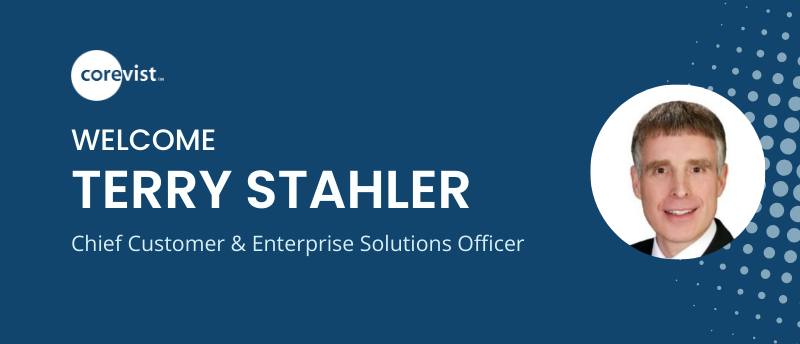Share
Author
George Anderson
Share
Manufacturers need B2B portals. The pandemic and rising digital expectations have made that clear.
But should you build your own, taking full control of every aspect? Or should you choose a template-based solution that launches fast?
As you can guess, there’s no right answer that will work for every company. But here are three questions to ask as you decide the path for your organization.
1. How long can you wait to realize value from a B2B portal?
Homegrown solutions take far longer to launch than prebuilt alternatives. This is one of the main reasons that manufacturers should think carefully about DIY portals.
Years ago, it made sense to build a B2B portal in-house. Before the competitive pressure of the digital age accelerated, organizations could take a year or 18 months (or longer) to scope, build, and launch a homegrown B2B portal. There weren’t a lot of platforms to choose from, and those that existed were fairly limited. If you needed a robust solution, this was the only way to get there. With so few organizations excelling at digital commerce, there was little competitive pressure.
That’s no longer the case. Digital is the name of the game, and manufacturers in every vertical are continuously launching and refining their digital experiences.
What’s more, today’s leading B2B portal platforms are built to prioritize time-to-value. Rather than reinventing the wheel, you should aim to launch fast and grow iteratively. This ensures you start realizing the value of digital interaction with dealers and distributors rather than waiting for a gigantic solution to launch.
Here’s a challenge: Why wait months or years to launch your portal? What if you found a platform that launches in 30 days? (Hint: That’s how easy it is to start with Corevist Commerce.)
While most organizations will get more value from a template-driven solution, we do see outlying cases where a home build makes more sense. This leads us to our next question.
2. Do you need a unique UX, or is a template sufficient?
Think about your ideal B2B portal. Chances are, it’s login-protected. Your dealers and distributors will come to it with clear goals in mind—to check price and availability, pay an invoice, track an order, or place a new order.
They’ve already made the decision to interact with your company. In the case of paying an invoice or tracking an order, they’re not going to jump over to the competition. They can only fulfill that task in your portal.
Granted, they can check price and availability with your competitors (assuming these companies have robust B2B portals). Customers may be able to place orders there, too. But even in these cases, contract pricing and product availability are more likely to decide the sale than a portal with a unique look and feel.
For each of these customer use cases, your B2B portal doesn’t need a unique UX (user experience) to close the sale or make sure the customer finishes the task. Your dealers and distributors don’t come to the portal because it looks and feels totally unique. They come because of their relationship with your company.
That’s why in most cases, a B2B portal doesn’t need a unique layout to become sticky with dealers and distributors. (In fact, a unique UX can actually get in their way if it deviates too far from the norm.) The portal just has to be useable—easy to navigate, intuitive, and perfectly functional on any device.
UX design is an entire discipline, and experts have established best practices here. Your organization can take the same long road as the experts in discovering these rules—or you can choose a template-based solution that already follows them.
In most cases, the template offers a far better value. But you can read more about the exceptions here (see question 3): Launching B2B Commerce Fast: 4 Questions To Ask.
Why does this matter?
Because the cost of a unique UX doesn’t end at GoLive. Once you launch, you’ll be wedded to that portal for life.
This leads us to our last question.
3. Do you have a lot of IT resources, or are you more limited?
Ask yourself this: Do you have willing staff who can dedicate themselves to supporting the B2B portal full-time?
If you’re like most manufacturers, you’re already constrained here. And you need to understand the burden that an in-house build will put on your IT team.
Every software solution requires experts with deep experience to maintain it. With a homegrown solution, there’s no support ecosystem or knowledge base outside your company for the B2B portal. You not only own the portal, but all knowledge required to run it. No one but your team will ever master these things.
This fact introduces two kinds of challenges that you’ll battle as long as you keep the portal running.
First off, when IT employees churn, they’ll take all that knowledge and experience with them. When you replace them, new employees will need ramp-up time to become experts in supporting your solution.
Secondly, you’ll also face increasing technical debt if the portal integrates with other systems (like SAP ERP). Changes to SAP and new versions of your integration connector will require modification of the home-built portal solution. Data sync problems can create ongoing fuzziness in business-critical information like orders, account balances, and invoices.
The takeaway: Weigh the need for control against available resources
If you’re up to the challenge, more power to you! Some organizations have the IT resources on hand to own this complexity and still win with customers.
But for manufacturers with strained IT resources, this path creates significant risk. In these cases, a managed, template-based B2B portal solution may be a better fit. This is especially true if it includes SAP ERP integration to support your core business processes. A solution like this allows you to interact with your dealers and distributors online while maintaining the focus on your core business.
Want to see deep SAP integration in your B2B portal?
Check out the Corevist Commerce demo video.
B2B portal platform with real-time SAP data and a sleek, mobile-friendly UI.










